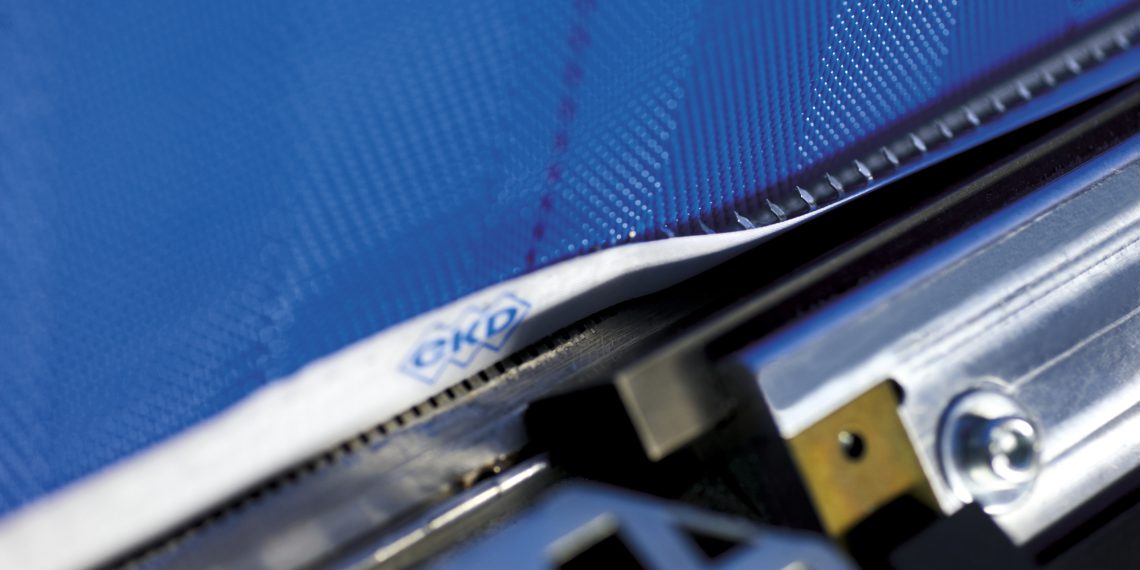At Filtech, the leading trade fair for filtration and separation technology, the stand of leading international technical weavers GKD — Gebr. Kufferath was a real magnet for the international specialists in attendance. The integrated solution competence in filter media and process belt solutions drew visitors from numerous sectors and countries. Interest in the process belts primarily revolved around solutions for increasingly challenging processes in the mining industry. The core focus was on gypsum drainage in phosphoric acid extraction, potash fertilizer, and flue gas desulphurization, as well as dewatering of lithium carbonate on continuous vacuum belt filter systems.
“There was so much going on during the first two days,” says Helmut Jakob, Senior Sales & Application Manager. The entire stand, which was double the size of last year’s, was full to bursting on all three days. Many visitors were looking for particularly fine and porous filter media, which they found in GKD’s industrial meshes. However, demand for solutions for dynamic belt filters was also high. With the Vacubelt range of filter belts, GKD offers products that guarantee high efficiency and safety in demanding dewatering processes. Developed and produced in Germany, they impress with their high transverse stability and very good directional stability. This stiffness protects against creasing in the area of the intake channel in particular. In addition, the smooth surface guarantees accordingly good cake discharge and excellent cleaning performance. One major source of inquiries during Filtech was fine process belt mesh. This reflects the challenge that the extractive industry is facing to increase productivity and yield. Vacubelt filter belts respond to this need with pore sizes designed to suit specific processes. For example, a Vacubelt 2015 with 50 µm aperture is used for dewatering lithium carbonate. This belt type has proven its worth around the world in similar types of processes such as gypsum drainage in flue gas desulphurization. It also offers a decisive advantage over competitors’ products: Even on large system widths of up to 4.35 meters and belt lengths of over 70 meters, this fine belt loses none of the stability for which Vacubelt filter belts are known. In addition to the Vacubelt 3354 and 3356 belt types for phosphogypsum dewatering, GKD also offers the 1003 screen belt successfully used in sewage sludge dewatering. These single-ply vacuum filter belts are tailored to the respective process and the grain size distribution of the gypsum and then thermally treated. They therefore guarantee constant high dewatering performance. The Vacubelt 5060 filter belt has been well established in potash fertilizer production for years thanks to its high temperature and abrasion resistance.
Problem solutions for many applications
The efficiency of this belt range is also highly valued beyond mining applications, with several visitors to the GKD stand inquiring about the belts for applications in entirely different industries. For instance, the Vacubelt 3354 is a proven alternative to common products made of polypropylene in cooling lubricant filtration. This belt type reliably retains swarf and particles abraded from the grinding wheel without the addition of filtration aids, even with thin filter cakes. “The visitors had done their homework ahead of time and were really looking for a solution for their application at our stand,” says Michael Seelert, Head of Process Belts, summing up his impression of this year’s Filtech. He confirmed the quality of the conversations held at the fair. There were many interesting inquiries ? even about new applications, for instance from the construction industry. During discussions, the belt experts developed initial approaches for solutions which will be firmed up following the trade fair. Michael Seelert also considered the participation of the Institute for Textile Technology (ITA) from RWTH Aachen University to have enriched the whole experience. GKD gave the ITA — one of the largest institutes in the mechanical engineering faculty — the opportunity to present its research topics at the trade fair stand. This gave rise to interesting additional starting points for discussions with customers and manufacturers.

















